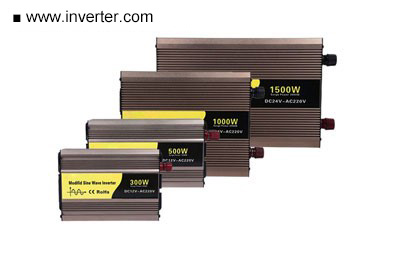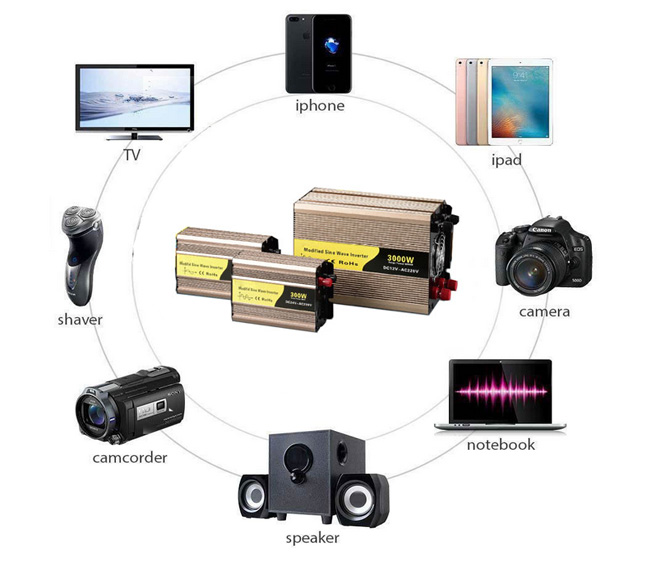The power inverter, and also called inverter is an electronic circuit that converts DC electricity to AC electricity. Actually, the inverter does not produce power, but if there is a DC source, and it just converts it to AC power.
What is the power inverter typical inputs?
Of course, it is DC supply voltage, but with different values, it may be small like 12V DC, 24V DC, 48V DC, or medium like 200V DC, 450V or high like hundreds of thousands of voltages.
In all cases the DC supply must be stable and capable of supplying requested power demand to the AC load in addition to some very small power loss (inefficacies).
Usually we use following typical voltages:
- Small input voltages like 12V, 24V, 48V DC are used for inverters used in running small applications like mobilE charger and home appliances / devices.
- Medium input voltages like 200V DC, 450V DC, 1000VD C are used for inverters used in photo-voltaic solar panels systems and electrical cars chargers.
- High input voltages like 100000V DC or higher are used for inverters used in high voltage DC power transmission stations / lines.
What is the power inverter typical outputs?

There are 3 parameters that will define the output of power inverter, and they are the frequency, the voltage, and power capacity.
The three parameters will be determined based on your load characteristics / requirements; whether its 50Hz or 60Hz, and whether its rated voltage is 120V, 220V, or any other standard voltage and the load required power in Watt or kilowatt (its inverter internal available power to drive that load)
What is the power inverter output wave form?
Mainly there are 2 popular different wave form output from the power inverter that are required to run our AC loads, that is pulse width modulated wave form and pure sine wave form.
The main difference is the purity of the output voltage wave, and of course, the more purity “less distortion”, the technically better to feed our loads.
Most of loads work best with pure sine wave output inverter as the wave will be pure like the standard wave getting for the traditional power grid. For eaxample, the motor works normally based on pure sine wave inverter, but in case of using Pulse width modulated wave inverter it produces heat, audible noise, and may provide strange speed / torque operation.
For some kinds of loads both types of inverter can be used with no problem at all like switch mode power supply devices (our personnel computers, DVD player, etc), so generally, most of electronics loads function normally when operated by pulse width modulated wave inverter.
Although the pure sine wave inverter is technically the best, it's more expensive than modified sine wave inverter but there is not much price difference around 20-30% max.

